Table of Contents
Jump to any section to explore specific hard disk drive facts:
- Historical Milestones – The evolution from 5MB to 36TB
- Company and Founder Stories – Pioneers who shaped the industry
- Technical Innovations and Details – Engineering breakthroughs
- Fun and Entertaining Facts – Surprising HDD trivia
- Uses, Applications, and Records – Real-world applications
Hard disk drive facts reveal an incredible journey of innovation spanning nearly 70 years. From the room-sized IBM RAMAC storing just 5MB in 1956 to today’s compact 36TB drives, HDDs have revolutionised how we store and access data. This comprehensive guide presents 100 fascinating hard disk drive facts covering everything from historical milestones and company stories to technical innovations and entertaining trivia.
Whether you’re researching HDD history timeline, hard drive technology explained, or simply curious about storage device evolution, these magnetic disk storage facts provide valuable insights into one of computing’s most important inventions. Each fact includes detailed context drawn from reliable historical and technical sources, making this the ultimate resource for understanding hard disk drives.
Quick Hard Disk Drive Facts
- First HDD: IBM RAMAC 305 (1956) – 5MB capacity, size of 2 refrigerators
- Latest capacity: 36TB in a 3.5-inch drive (2025)
- Speed range: 5,400 to 15,000 RPM
- Head flying height: 3-5 nanometres (thinner than DNA strand)
- Price drop: From $640/MB/month (1956) to $0.01/GB (2025)
Historical Milestones
1. The first hard drive, IBM’s RAMAC 305, was introduced in 1956 and could store approximately 4.4MB of data.
The IBM 305 RAMAC, part of the Random Access Method of Accounting and Control system, marked a pivotal shift from punch cards and tape storage to random access disks, enabling faster data retrieval for businesses like accounting firms. It used 50 24-inch platters spinning at 1,200 RPM, with read/write heads that floated on air cushions, a foundational technology still in use today in modern hard disk drive designs and data storage solutions.
2. Early hard drives were the size of refrigerators and weighed over 1 ton (2,200 pounds).
The IBM 350 Disk File, the storage unit for the RAMAC, required forklift transportation and a dedicated room due to its bulk, highlighting the engineering challenges of early magnetic storage. Despite its size, it represented a leap in capacity over previous methods, storing the equivalent of 64,000 punch cards, paving the way for HDD evolution and compact data storage advancements.
3. The IBM RAMAC 305 used 50 24-inch platters and was leased for $3,200 per month, not sold.
Leasing was common for such expensive equipment in the 1950s, as outright purchase would cost around $35,000 (equivalent to over $300,000 today), making it accessible only to large corporations. The platters were coated with magnetic material, allowing data to be written and read via heads that moved across them, a basic principle that evolved into modern HDD designs and magnetic disk technology.
4. The first 1GB hard drive was introduced by IBM in 1980 and cost $40,000.
The IBM 3380 featured two 1.26GB head disk assemblies and weighed 550 pounds, designed for mainframe computers in data-intensive industries like banking. This milestone demonstrated advancing platter density and head technology, paving the way for gigabyte-scale storage in personal computing and enterprise data solutions.
5. The first PC hard drive was the Seagate ST-506 introduced in 1980 with 5.25MB capacity.
The ST-506 became a standard for early personal computers, offering five times the capacity of contemporary floppy disks at a cost of about $1,500. It used a stepper motor for head positioning, which was less precise than modern voice coil actuators but sufficient for the era’s needs in PC storage history.
6. The first removable hard drive was IBM’s 1311 in 1963 with 2.6MB capacity.
This drive used disk packs that could be swapped like modern external drives, weighing 10 pounds and holding six disks, which allowed users to transport data between systems easily. It rotated at 1,500 RPM, a slower speed compared to today’s standards, but it introduced portability to enterprise storage and removable media evolution.
7. Hard drives achieved 1 terabyte capacity in 2007, 51 years after the first drive.
Hitachi’s Deskstar 7K1000 was the first 1TB drive, using perpendicular magnetic recording to pack more data, a breakthrough that accelerated capacity growth for consumer and enterprise use. This came just as digital media like high-definition video demanded larger storage, transforming how users managed personal libraries in the terabyte era.
8. The first 2TB hard drive was introduced in 2009, just 2 years after the first 1TB drive.
Western Digital’s Caviar Green series achieved this by increasing platter density and using energy-efficient designs, catering to the rising need for home media servers and backups. The rapid progression underscored Moore’s Law-like scaling in storage, where capacities doubled frequently in the late 2000s, boosting HDD capacity trends.
9. The IBM 3380 was the first gigabyte-capacity disk drive in 1980, weighing 550 pounds and costing $40,000.
Designed for mainframes, it consisted of multiple modules and used thin-film heads for better performance, symbolising the transition to higher-density storage for business applications. Its high cost limited it to large organisations, but it set the stage for affordable gigabyte drives in the 1990s and gigabyte storage milestones.
10. The first 3.5-inch hard drive was introduced by Rodime in 1983.
The Rodime RO352 offered 10MB on two platters, a form factor that became standard for desktops due to its compact size fitting into PC cases. This innovation helped integrate HDDs into smaller computers, boosting the personal computing revolution and 3.5-inch HDD standards.
11. In 1956, IBM shipped the first commercial HDD to Zellerbach Paper, revolutionising data storage forever!
Zellerbach, a paper company, used the RAMAC for inventory management, demonstrating practical applications beyond theory and sparking widespread adoption in industries needing quick data access. This shipment highlighted HDDs’ potential to replace slower tape systems in commercial data storage history.
12. The 1961 IBM invention of air-bearing read/write heads allowed HDD heads to “fly” over platters without touching!
Air-bearing technology created a thin air cushion from platter rotation, preventing wear and enabling closer head-platter proximity for higher density. This remains a core feature, though modern heads fly at nanometre heights for terabyte capacities in flying head technology.
13. In 1973, IBM’s Winchester drive pioneered sealed HDDs with capacities up to 70MB – a game-changer!
The sealed design protected against dust, using lubricated platters and low-mass heads, named after the Winchester rifle for its 30-30 MB configuration. It became the blueprint for all modern HDDs, improving reliability in various environments and sealed hard drive innovations.
14. The first RAID patent in 1977 described redundant arrays, boosting HDD reliability!
Filed by Norman Ken Ouchi at IBM, it laid the groundwork for RAID 4, allowing data striping and parity for fault tolerance. RAID systems later became essential for servers, protecting against drive failures in large arrays and RAID technology history.
15. The first hard drive to use thin-film heads was IBM’s 3370 in 1979.
Thin-film heads, made via photolithography, offered better sensitivity and density than ferrite heads, enabling smaller drives with higher capacities. This innovation was crucial for the miniaturisation trend in the 1980s and thin-film head advancements.
16. The first removable disk pack drive came in 1965, letting users swap storage like modern external drives!
IBM’s disk packs allowed data portability, a precursor to removable media like USB drives, used in mainframes for backup and sharing. Each pack held multiple platters, weighing several pounds but providing flexibility in removable storage evolution.
17. The IBM 1311 in 1962 introduced removable packs, weighing 10 lbs with 6 disks!
This drive’s packs stored 2 million characters, rotating at 1,500 RPM, and were designed for easy exchange in business settings. It bridged fixed and removable storage, influencing future designs in disk pack technology.
18. From 5MB in 1956 to 20TB+ today, HDD capacity has exploded thanks to clever engineering!
Advances in areal density, perpendicular recording, and multiple platters have driven this growth, with modern drives holding millions of times more data. This evolution supports big data, streaming, and cloud storage in HDD capacity growth facts.
19. The first 1TB HDD was announced by Hitachi in 2007, marking a huge leap in consumer storage!
Using five platters, it targeted desktops and servers, enabling users to store vast media collections affordably. The quick follow-up to 2TB showed accelerating innovation in the consumer market and terabyte HDD milestones.
20. HDDs became dominant in the 1960s for computers, replacing slower tape storage!
Random access allowed quicker retrieval than sequential tape, transforming computing for databases and scientific applications. By the late 1960s, HDDs were standard in mainframes, marking the rise of disk storage dominance.
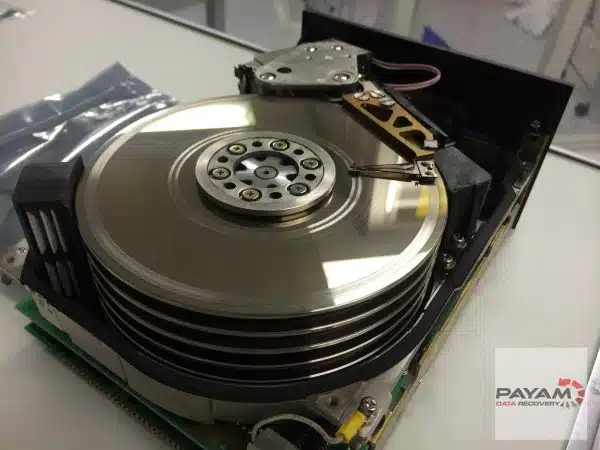
Company and Founder Stories
21. Reynold B. Johnson is known as ‘the father of the hard drive’ for inventing the first HDD at IBM.
A former teacher, Johnson led the San Jose team that developed the RAMAC, drawing from his experience inventing test-scoring machines. His work earned him over 90 patents and the National Medal of Technology in 1986, highlighting HDD inventor stories.
22. Western Digital owns over 7,000 patents in hard drive technology.
Founded in 1970 as General Digital, WD has innovated in controllers and interfaces, acquiring companies like SanDisk to expand into SSDs. Their patents cover everything from head designs to error correction, solidifying their market leadership in storage patent portfolios.
23. Alan Shugart, co-founder of Seagate, helped pioneer HDDs for PCs after working on early IBM drives!
Shugart left IBM to found Shugart Associates for floppy drives, then Seagate in 1979, introducing the ST-506. Known for eccentricity, he ran his dog for Congress and wore Hawaiian shirts, embodying Silicon Valley’s creative spirit in Seagate founder biographies.
24. Seagate, founded in 1979, grew from early HDD pioneers to a storage giant!
Started by Shugart and Finis Conner, Seagate acquired rivals like Conner Peripherals and Maxtor, becoming a top manufacturer. They focus on high-capacity drives for data centres, with innovations like HAMR for future densities in Seagate company history.
25. Gustav Tauschek sold early disk storage patents to IBM in the 1930s, laying groundwork for modern HDDs!
An Austrian inventor, Tauschek’s magnetic drum patents influenced IBM’s research, though he received little recognition. His work in punch card systems transitioned to magnetic storage concepts in early HDD patent history.
26. John Lynott and William Goddard invented key magnetic disk storage tech at IBM’s San Jose lab!
Their 1953 patents for disk arrays enabled the RAMAC, solving random access needs for large datasets. The San Jose lab became a hub for storage innovation, now part of Hitachi in IBM storage inventors.
27. Richard B. Mulvany and Rudolf W. Lissner patented key Winchester HDD tech in 1973!
Their sealed assembly patent reduced contamination, improving reliability for the IBM 3340. This design influenced all subsequent HDDs, making them suitable for non-cleanroom environments in Winchester drive patents.
28. IBM’s San Jose lab birthed the HDD in 1956, now a hub for storage innovation!
Established in 1952, the lab developed RAMAC and later advancements like GMR heads. Sold to Hitachi in 2002, it continues research in nanotechnology for storage in IBM San Jose lab history.
29. Al Shugart, Seagate founder, searched a dictionary for a 7-letter word starting with ‘S’, ending in ‘T’, with ‘G’ in the middle – finding “Seagate”!
After leaving Shugart Associates due to a naming conflict, he needed a new name for his HDD company. Seagate evoked ocean gates, symbolising data flow, and grew to dominate the market in Seagate naming story.
30. Jacob Rabinow earned 229 patents, including early disk storage concepts, a pick-proof lock, and a device to keep tennis balls bouncy.
Working at the National Bureau of Standards, Rabinow’s 1949 disk ideas preceded RAMAC. His diverse inventions showcased his versatility, from storage to everyday gadgets in prolific inventors in storage.
31. Al Shugart wore Hawaiian shirts to work and ran his dog “Ernest” for political office to protest the system.
Shugart’s quirky personality included writing a book about his dog’s “campaign,” critiquing politics. This light-hearted rebellion reflected the informal culture of early tech startups in tech founder eccentricities.
32. Finis Conner co-founded Seagate, left in 1984 to start Conner Peripherals as a rival, then Seagate acquired it in 1996.
Conner Peripherals grew rapidly, focusing on small form factors, but the acquisition consolidated the industry. This cycle of competition and merger is common in storage tech in storage company mergers.
33. The hard drive industry stems from Rey Johnson’s test-scoring machine, which evolved into magnetic reading tech for drives.
Johnson’s 1930s invention for grading tests used mark-sensing, leading to IBM hiring him and applying similar principles to HDD heads. This unexpected origin ties education to computing in origins of HDD technology.
34. Western Digital lost a $262 million patent lawsuit in 2023 to Austrian professor Dieter Suess for magnetic recording technology used since 2018.
The lawsuit highlighted intellectual property battles in HDDs, with Suess’s work on multilayer media improving density. WD appealed, but it underscores academia’s role in industry in HDD patent disputes.
35. Rodime, a Scottish company, created the first 3.5″ hard drive in 1983 (10MB), then sued major manufacturers, collecting $26 million from IBM.
Rodime’s patent lawsuits protected their form factor innovation, funding further development. Though the company folded, their design endures in desktops in Rodime HDD legacy.
36. Memorex shipped the first IBM-plug-compatible disk drive in 1968, marking the beginning of independent competition.
The Memorex 630 challenged IBM’s monopoly, leading to a wave of plug-compatible manufacturers (PCMs) that lowered prices and spurred innovation in plug-compatible HDDs.
37. IBM sold its HDD division to Hitachi in 2003, ending its direct involvement in drive production.
The $2 billion deal formed Hitachi Global Storage Technologies, later acquired by WD, consolidating the industry into fewer players like WD, Seagate, and Toshiba in IBM HDD division sale.
38. Seagate acquired Conner Peripherals in 1996, reuniting co-founders Shugart and Conner after their rivalry.
The $1.1 billion stock deal strengthened Seagate’s position in small drives, illustrating how personal relationships shape corporate landscapes in Seagate acquisitions.
39. Hitachi and Toshiba entered the HDD market in 1967, expanding global competition.
These Japanese companies brought manufacturing expertise, eventually leading to innovations like the first 1TB drive by Hitachi in 2007 in Japanese HDD manufacturers.
40. Maxtor acquired bankrupt MiniScribe in 1990 to expand low-end HDD production.
MiniScribe’s scandal involved shipping bricks instead of drives, but the acquisition helped Maxtor grow before its own buyout by Seagate in 2006 in HDD industry scandals.
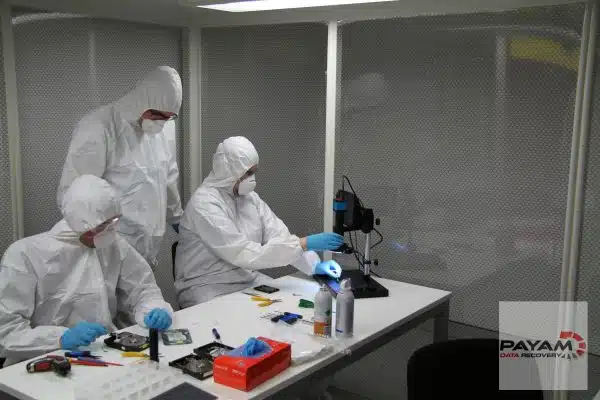
Technical Innovations and Details
41. Hard drive read/write heads fly just 3-5 nanometres above the platter surface.
This proximity allows high data density but risks head crashes if dust interferes, requiring cleanroom assembly. Modern heads use sliders to maintain the air cushion at speeds up to 15,000 RPM in HDD head flying technology.
42. Modern hard drives can store up to 36TB of data as of 2025.
Achieved through HAMR and multiple platters filled with helium, these drives support cloud storage and AI data needs. Future tech like graphene could push to 100TB in high-capacity HDD developments.
43. Hard drives spin at speeds up to 15,000 RPM in enterprise models.
Higher RPM reduces latency for servers, but increases power use and heat; consumer drives often run at 7,200 RPM for balance in enterprise HDD speeds.
44. The fundamental patent for disk drives is US Patent 3,503,060 issued in 1970.
Filed by IBM’s Bryson Gardner, it described basic magnetic disk principles, influencing all subsequent designs and legal battles in core HDD patents.
45. Hard drive platters are made of aluminium or glass coated with magnetic material.
Glass platters, introduced in 1991, offer smoothness for higher density, while aluminium is lighter; both are polished to mirror finish and coated nanometres thick in HDD platter materials.
46. The gap between read/write heads and platters has decreased from 0.2mm to 0.07mm or less.
This reduction enables terabit-per-square-inch density, but demands precise actuators to avoid contact, using thermal flying height control in modern drives in head-platter gap evolution.
47. Hard drive areal density has grown from 2,000 bits per square inch to over 1 terabit per square inch.
Innovations like GMR and PMR drove this, allowing 20TB+ in 3.5-inch form; future MAMR could exceed 10 terabits in areal density advancements.
48. Hard drives use voice coil motors to position read/write heads with incredible precision.
Similar to loudspeaker mechanisms, these motors enable sub-micrometre accuracy, essential for tracking nanometre-wide data tracks in voice coil actuator technology.
49. Modern hard drives can transfer data at speeds of 100-150 MB/s.
SATA interfaces and cache memory contribute, though SSDs are faster; enterprise drives reach 250 MB/s with optimised firmware in HDD transfer rates.
50. Hard drive platters are coated with magnetic material just a few millionths of an inch thick.
The coating, often cobalt-based alloys, stores bits via magnetic orientation, protected by carbon overcoats for durability in magnetic coating facts.
51. Hard drives require clean room environments for manufacturing to prevent contamination.
Class 100 cleanrooms are 1,000 times cleaner than operating theatres, as a dust particle could cause catastrophic head crashes in HDD manufacturing processes.
52. Hard drives use error correction codes to detect and fix data corruption.
Reed-Solomon codes, introduced in the 1970s, recover from errors, ensuring data integrity in RAID and single drives in error correction in storage.
53. Hard drive cache memory has grown from 0KB in early drives to 256MB in modern drives.
Cache buffers frequent data, improving performance; DRAM or NAND is used, with algorithms predicting access patterns in HDD cache evolution.
54. Perpendicular magnetic recording increased storage density by orienting magnetic fields vertically.
Introduced by Toshiba in 2005, PMR packed bits tighter than longitudinal recording, enabling terabyte drives in PMR technology facts.
55. Hard drives can withstand up to 300G of shock when not operating.
Ramp loading parks heads off platters, protecting during transport; operating shock is lower, around 70G in HDD shock resistance.
56. Hard drives are hermetically sealed to maintain proper air pressure and cleanliness.
Breather holes with filters allow pressure equalisation, but helium-sealed drives reduce turbulence for more platters in sealed HDD designs.
57. Shingled Magnetic Recording (SMR) overlaps tracks like roof shingles for higher density, but slower writes!
SMR increases capacity by 25%, but requires rewrite for changes, suited for archival storage like backups in SMR innovations.
58. Heat-Assisted Magnetic Recording (HAMR) uses lasers to heat bits for denser writing, pushing HDD limits!
HAMR allows stable high-coercivity media, targeting 100TB, with Seagate testing prototypes in HAMR technology.
59. Microwave-Assisted Magnetic Recording (MAMR) uses microwaves to assist writing for ultra-high densities!
WD’s MAMR flips bits with spin torque oscillators, cheaper than HAMR, for 40TB+ drives in MAMR advancements.
60. Energy-Assisted PMR (ePMR) combines tech to pack more bits per inch in modern drives!
ePMR enhances PMR with energy for stability, used in 20TB drives, bridging to advanced recording methods in ePMR facts.
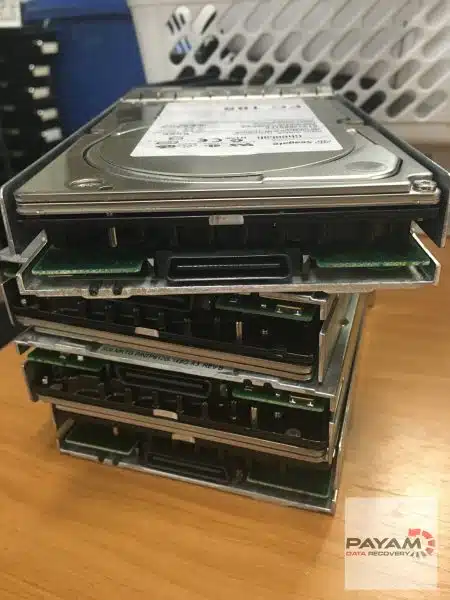
Fun and Entertaining Facts
61. The “Winchester” hard drive, introduced by IBM in 1973, got its nickname from the .30-30 rifle, because the drive was designed for two 30MB spindles.
The nickname stuck for sealed drives, even as capacities changed to 35MB or 70MB, becoming industry slang into the 1990s in Winchester HDD trivia.
62. Early hard drives required separate temperature-controlled rooms to operate reliably.
RAMAC needed stable environments to prevent thermal expansion issues, like old mainframes in air-conditioned data centres in early HDD operational facts.
63. The cost of hard drive storage has plummeted from over $9 million per gigabyte in 1956 to mere cents today.
This drop, from $640/MB/month leasing, enables affordable cloud storage, with 1TB now under $50 in storage cost reduction history.
64. Giant Magnetoresistance (GMR) technology, developed by IBM, won its inventors the Nobel Prize in Physics in 2007 for revolutionising HDD storage.
Albert Fert and Peter Grünberg discovered GMR, boosting head sensitivity, leading to multi-gigabyte drives in GMR Nobel Prize facts.
65. The term “head crash” refers to the read/write head making physical contact with the platter surface, often causing data loss.
Crashes scrape the magnetic layer, like a plane crash-landing, requiring data recovery specialists in cleanrooms in head crash explanations.
66. A single dust particle inside a hard drive can be large enough to cause a head crash, equivalent to a boulder on a highway.
At nanometre scales, dust acts like obstacles, why HDDs are assembled in ultra-clean environments in dust contamination risks.
67. Janet Jackson’s “Rhythm Nation” song caused 5400 RPM hard drives to crash due to a resonant frequency; Microsoft added filters to fix it.
The song’s bass note vibrated nearby laptops’ drives, a bizarre bug in early 2000s hardware in unusual HDD failures.
68. The “click of death” is the read/write head smashing against a limiter while trying to find data – a mechanical failure sign.
This sound indicates actuator issues, often preceding total failure, prompting immediate backups in click of death phenomenon.
69. Hard drives have breathing holes with filters; they’re not airtight, and high altitude without pressure can cause issues.
Breathers equalise pressure but filter contaminants; helium drives are fully sealed to prevent leaks in HDD breathing mechanisms.
70. IBM’s Board of Directors nearly cancelled the hard drive project fearing it would destroy their punch card business, but the chairman intervened.
Thomas Watson Jr. overrode the board, betting on disks’ future, a decision that shaped modern computing in HDD project near-cancellation.
71. A 256GB smartphone equals about 82 Olympic pools filled with 1956-era RAMAC hard drives in storage capacity.
Each RAMAC held 5MB, so thousands would match a phone’s storage, illustrating miniaturisation in storage comparison trivia.
72. Hard drives can contain trace amounts of precious metals like gold, silver, and platinum.
Used in connectors and platters, recycling e-waste recovers millions in value annually in precious metals in HDDs.
73. The precision required for hard drive manufacturing is so high that parts are often measured in angstroms (one ten-billionth of a metre).
Angstrom-level tolerances ensure heads align with atomic-scale bits, rivaling space tech precision in manufacturing precision facts.
74. The magnetic coating on HDD platters is only 10-20 nanometres thick – 125 times thinner than a soap bubble wall.
This thinness allows dense packing but requires protective overcoats against corrosion in platter coating thickness.
75. A single 3.5-inch HDD platter contains up to 250,000 concentric data tracks, stretching hundreds of miles if laid end-to-end.
Tracks are nanometres wide, with servo patterns guiding heads for accuracy in data track density.
76. HDD heads zip across platters at up to 22 mph and stop on a track 1/10th the width of a human hair – like parking at highway speed!
Voice coil actuators enable this, with feedback loops for positioning in head movement speed trivia.
77. The internal temperature of an operating hard drive can reach around 50-60 degrees Celsius.
Optimal range is 5-55C; exceeding causes failures, hence cooling in PCs in HDD operating temperatures.
78. Hard drive platters often have a diamond-like carbon (DLC) coating for protection against head crashes.
DLC is nanometres thick, providing hardness and low friction for longevity in DLC coating benefits.
79. Hard drive motors are often fluid dynamic bearing (FDB) motors, which are quieter and more reliable than ball bearings.
FDB uses fluid for smooth rotation, reducing noise in consumer drives in FDB motor advantages.
80. The manufacturing process for hard drive heads is similar to that of microchips, using photolithography.
Layers are etched at nanoscale, enabling GMR and TMR heads in head manufacturing similarities.
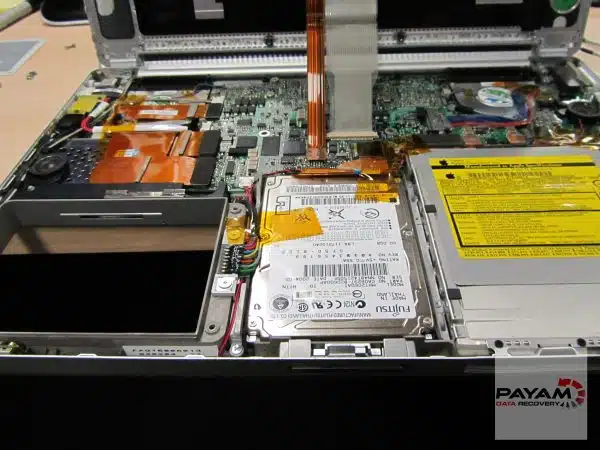
Uses, Applications, and Records
81. Hard drives spin at speeds up to 15,000 RPM in enterprise models.
Used in servers for low latency, like databases; Seagate’s Cheetah X15 was first in 2000 in enterprise spin speeds.
82. The smallest hard drive form factor was 0.85 inches, introduced by Toshiba in 2004.
For MP3 players and cameras, holding 8GB, now obsolete with SSDs in micro HDD form factors.
83. The first hard drive interface was developed by Shugart Associates in 1981 (SASI).
SASI evolved to SCSI, used in high-end systems for multiple devices in early HDD interfaces.
84. Data on a hard drive is organised into tracks, sectors, and cylinders.
CHS addressing was standard before LBA for larger drives in data organisation on HDDs.
85. RAID (Redundant Array of Independent Disks) technology, proposed in 1988, uses multiple hard drives to improve performance or data redundancy.
Berkeley paper defined levels like RAID 5 for parity, essential for data centres in RAID applications.
86. The first hard drive to utilise SMART (Self-Monitoring, Analysis and Reporting Technology) was developed by IBM in 1992.
SMART monitors health, predicting failures via attributes like temperature in SMART technology uses.
87. The “ramp load” technology in modern HDDs lifts the heads off the platters when the drive is not in use, protecting them during movement.
Common in laptops, it reduces shock damage during transport in ramp load protection.
88. Hard drives are a core component of many modern technologies, from data centres to personal computers and DVRs.
They store OS, files, and media, with hybrids combining flash for speed in HDD applications today.
89. The data rate of hard drives has increased from just kilobytes per second to hundreds of megabytes per second.
Interfaces like SATA III reach 6Gb/s, enabling fast file transfers in data rate improvements.
90. The magnetic coercivity of hard drive media, its resistance to demagnetisation, has steadily increased over time to pack more data.
Higher coercivity stabilises bits, but requires assisted writing like HAMR in coercivity in storage.
91. Hard drives use a complex system of servo tracks to guide the read/write heads precisely over the data tracks.
Embedded servos provide feedback for positioning, crucial for high density in servo track systems.
92. The energy consumed by hard drives has significantly decreased over the years, making them more environmentally friendly.
Modern drives use 5-7W idle, with green models optimising spin-down in energy-efficient HDDs.
93. The lifespan of a typical consumer hard drive can range from 3 to 5 years, though many last longer.
MTBF ratings exceed 1 million hours, but usage and environment affect longevity in HDD lifespan facts.
94. Even with the rise of SSDs, hard drives remain the most cost-effective solution for storing massive amounts of data.
At $0.01/GB, HDDs suit archives, while SSDs excel in speed in HDD vs SSD cost comparison.
95. Microsoft sank data centres with HDDs underwater; they had 1/8th the failure rate due to stable temps and no oxygen corrosion.
Project Natick showed underwater cooling benefits, potentially future-proofing storage in underwater data centres.
96. Some hard drives from the 1990s still work after 30+ years, booting old OS like Windows 3.1 perfectly.
Quality builds and low usage preserve them, collectors’ items now in vintage HDD durability.
97. NASA uses hardened HDDs in space missions that survive radiation, zero gravity, and extreme temperatures.
Radiation-shielded for satellites, storing mission data reliably in space-grade storage.
98. Large HDD data centres use electricity equivalent to small cities, contributing to a significant carbon footprint.
Hyperscalers like Google optimise with efficient drives to reduce impact in data centre energy use.
99. Hard drives use Reed-Solomon error correction to protect data, a technology also used in CDs and DVDs.
Invented in 1960, it adds parity bits to recover from errors, vital for long-term storage in Reed-Solomon codes in HDDs.
100. The music industry faces a “digital dark age” as 1990s HDDs with master recordings fail faster than they can be recovered.
Many archives are on obsolete drives, prompting digitisation efforts to preserve cultural history in digital preservation challenges.
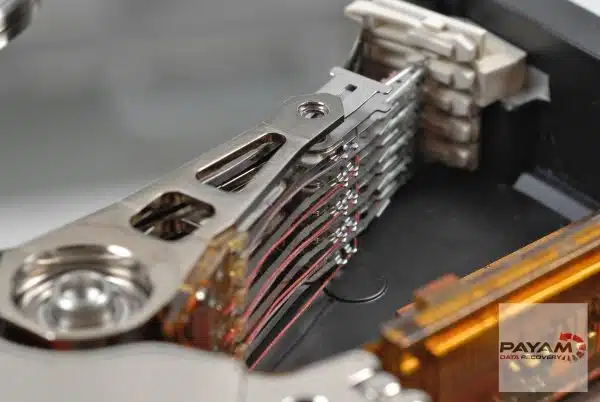
Summary: Key Takeaways from These Hard Disk Drive Facts
These 100 hard disk drive facts demonstrate the remarkable evolution of storage technology over seven decades. From the refrigerator-sized RAMAC to today’s palm-sized multi-terabyte drives, HDDs have enabled the digital revolution. Key milestones include:
- Capacity Growth: From 5MB (1956) to 36TB (2025) – a 7.2 million-fold increase
- Cost Reduction: From $9 million per GB to under 1 cent per GB
- Size Reduction: From room-sized units to 2.5-inch laptop drives
- Technology Advances: GMR heads, perpendicular recording, HAMR, and MAMR
- Industry Evolution: From IBM monopoly to global competition
Understanding these hard disk drive facts helps appreciate how far storage technology has come and where it’s heading. Whether you’re interested in HDD technology, industry history, or just entertaining trivia, these facts showcase why hard drives remain essential for affordable, high-capacity storage in 2025 and beyond.
Bonus Question for HDD Enthusiasts
True or False?
In 1985, Apple released a hard drive that was completely silent because it used magnetic levitation for the platters.
What do you think? True or False?
This bonus fact tests your knowledge of hard disk drive history and whether you can spot the fictional among the factual. The answer might surprise you!
Related Links
Payam Data Recovery’s Hard Drive Data Recovery Service
https://www.payam.com.au/hdd-data-recovery/
Share and Link to This Article
You are welcome to link to this article without permission. Please give credit to Payam Data Recovery when referencing or quoting from this content on hard disk drive facts, HDD history, or data storage innovations.
